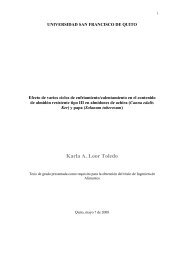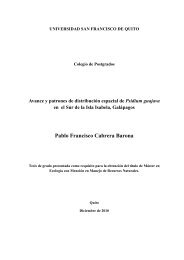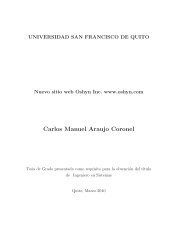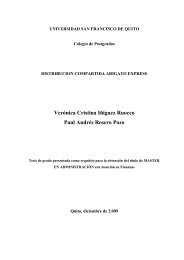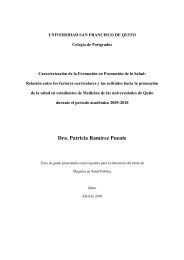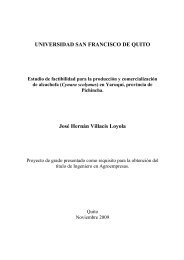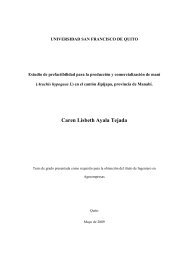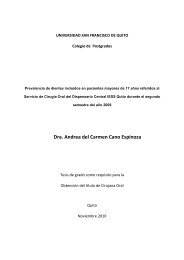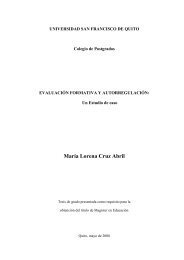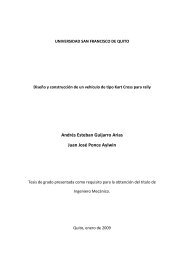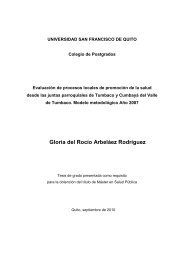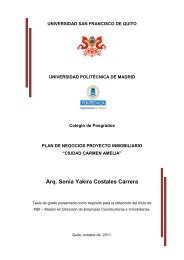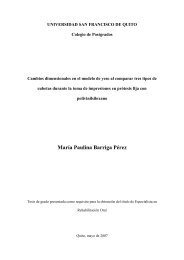Myriam Elizabeth Saavedra López - Repositorio Digital USFQ ...
Myriam Elizabeth Saavedra López - Repositorio Digital USFQ ...
Myriam Elizabeth Saavedra López - Repositorio Digital USFQ ...
Create successful ePaper yourself
Turn your PDF publications into a flip-book with our unique Google optimized e-Paper software.
level<br />
Advantages:<br />
α = 2k/ (n + 1) (7)<br />
• The p-values of the tests are exact in the sense that no approximation of the distribution of the<br />
test statistic is required.<br />
• The p-values are inexact in the sense that the number of possible realizations under ψ is typically<br />
infinite. At least the number of realizations will be so large that enumeration is not possible.<br />
• The number n of simulations must be chosen sufficiently large. For a 5% level lest n = 99 and<br />
for a 1% level test n = 999 have been recommended. As long as the model ψ can be simulated,<br />
the observed pattern can be compared against complex point processes by essentially the same<br />
procedure. Simulation tests thus provide great flexibility.<br />
Disadvantages:<br />
• Simulations of test have several critical choices at the user side, such as the number of simulations<br />
and the test statistic.<br />
• Diggles (1993) cautions against “data dredging”, the selection of a non-sensible statistic test for<br />
the sake of rejecting a particular hypothesis. Even if a sensible statistic test is chosen, the results<br />
of test simulations may not agree. The power of this procedure is also difficult to establish, in<br />
particular, when applied to test for point patterns. The alternative hypothesis for which the<br />
power is to be determined is not clear.<br />
3.3 Simulation Envelopes<br />
According to Schabenberger (2005, 88-89), a Monte Carlos Test calculates a single statistic test for<br />
the observed pattern and each of the simulated patterns. Often, it is used with functions of the point<br />
patterns. For example, let ri denote the distance from event si to the nearest other event and let<br />
I (ri ≤ r) denote the indicator function with return 1, whether ri ≤ r. Then ˆ G (r) = 1<br />
n<br />
10<br />
n<br />
i=1 I (ri ≤ r)<br />
is an estimate of the distribution function of nearest-neighbour event distances and can be calculated<br />
for any value of r. With a clustered pattern, we expect an excess number of short nearest-neighbour<br />
distances (compared to a CSR pattern). The method for obtaining simulation envelopes is similar to<br />
that used for a Monte Carlos test, but instead of evaluating a single test statistic for each simulation,<br />
a function such as ˆ G (r) is computed. Let ˆ G0 (r) denote the empirical distribution function based<br />
on the observed point pattern. Calculate ˆ G1 (r) , ...., ˆ Gg (r) from g point patterns simulated under<br />
CSR (or any other hypothesis of interest). Calculate the percentiles of the investigated function from



